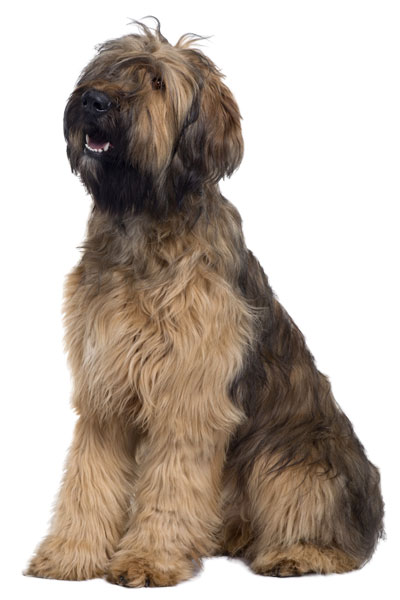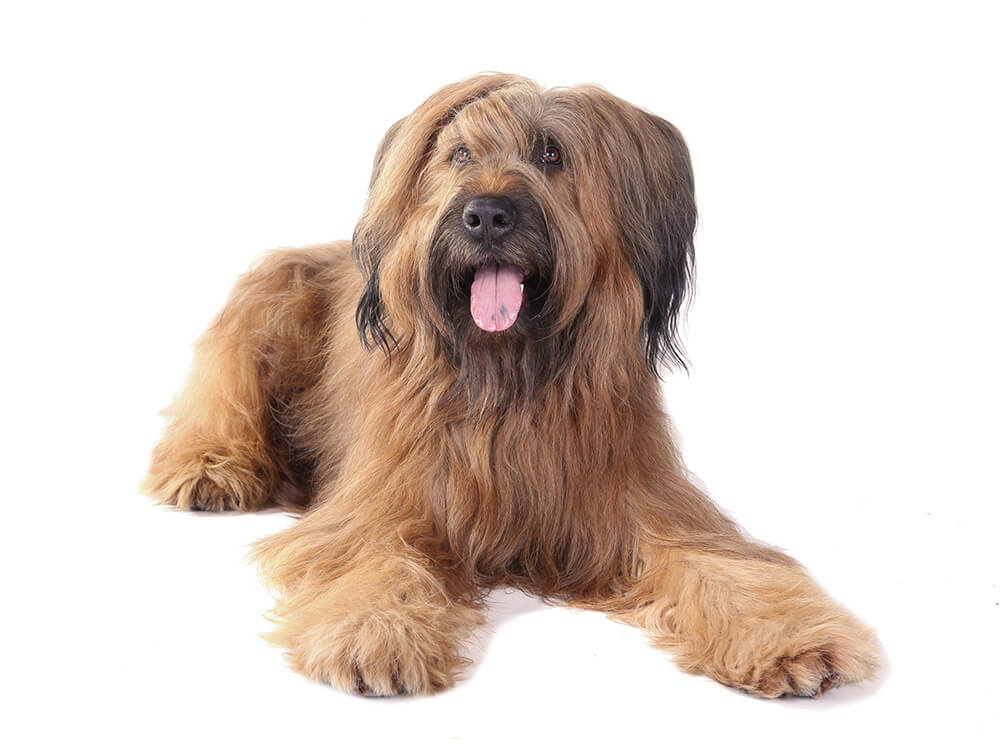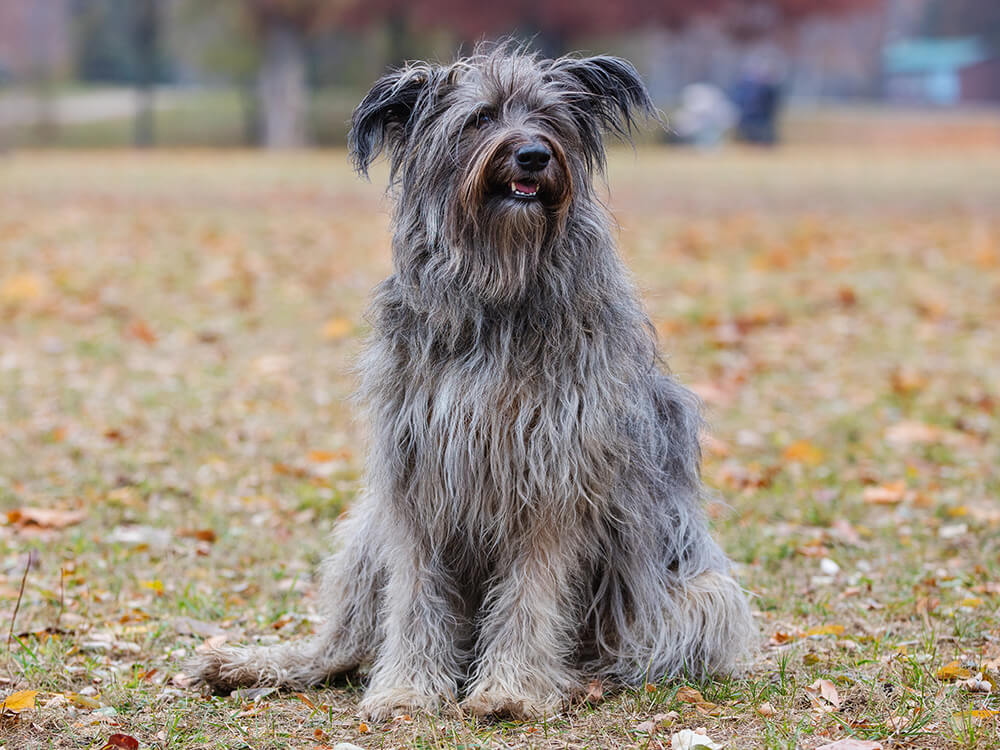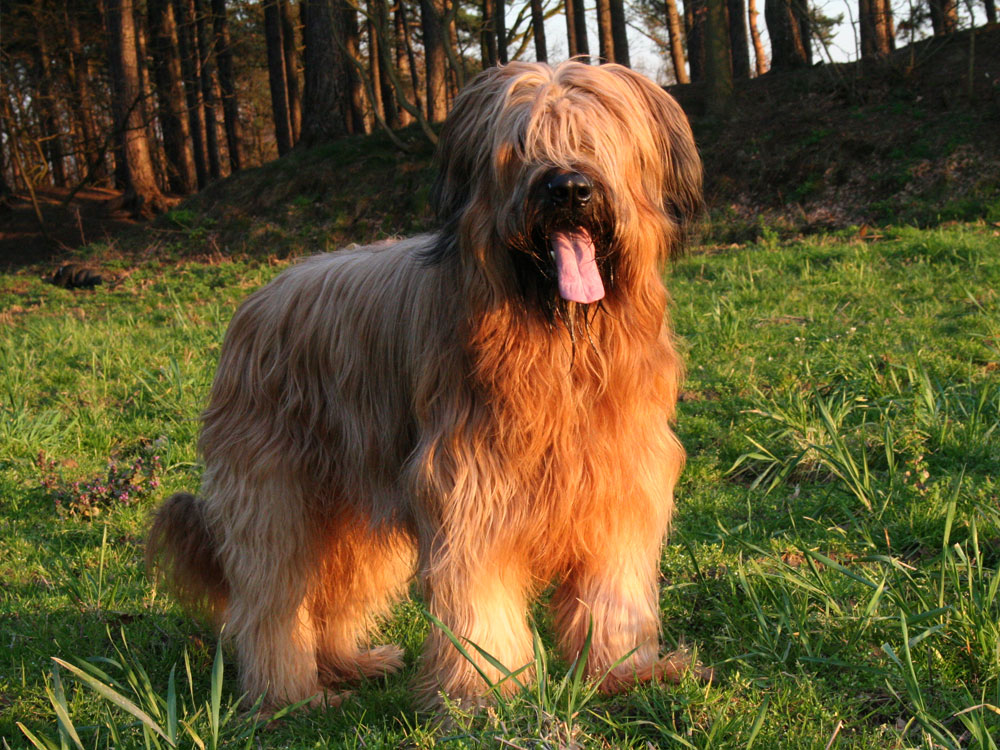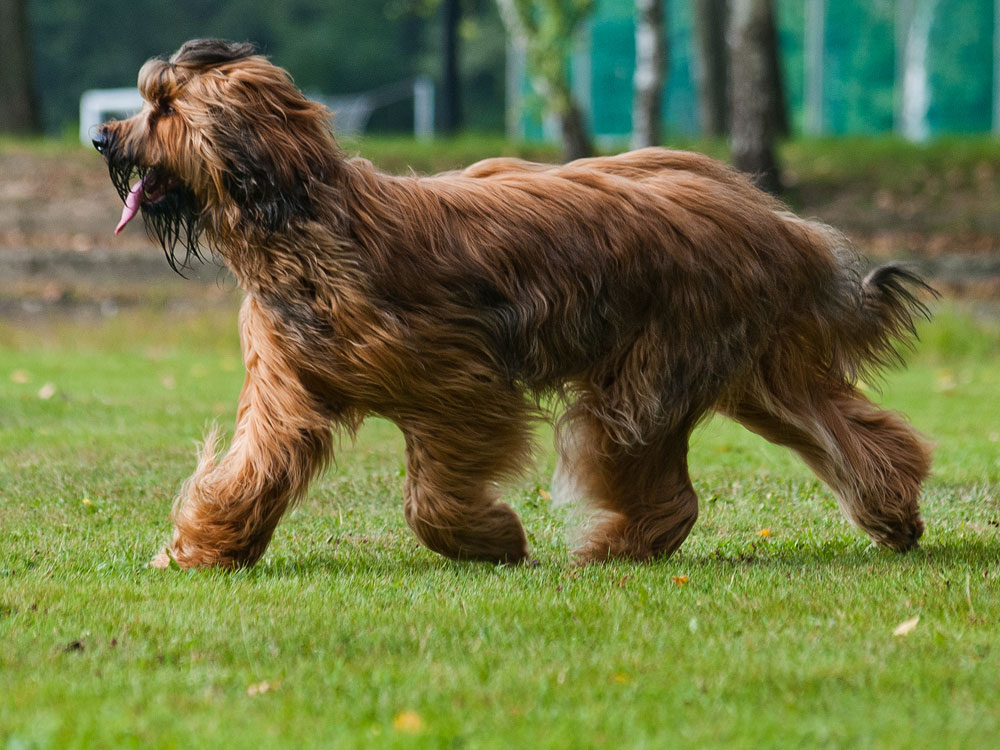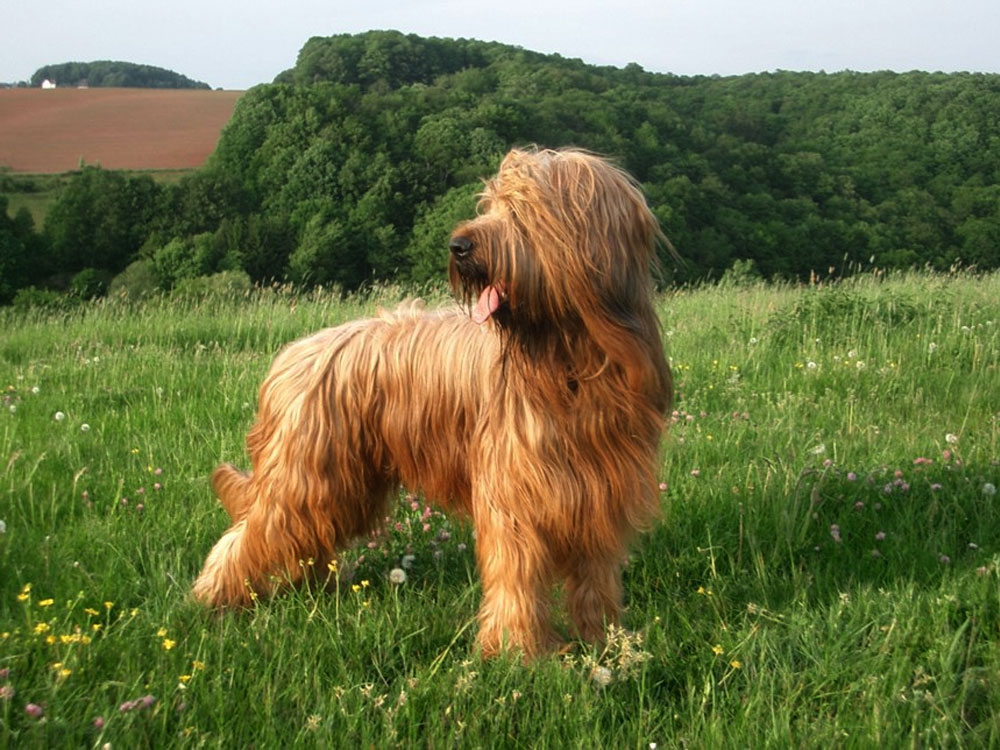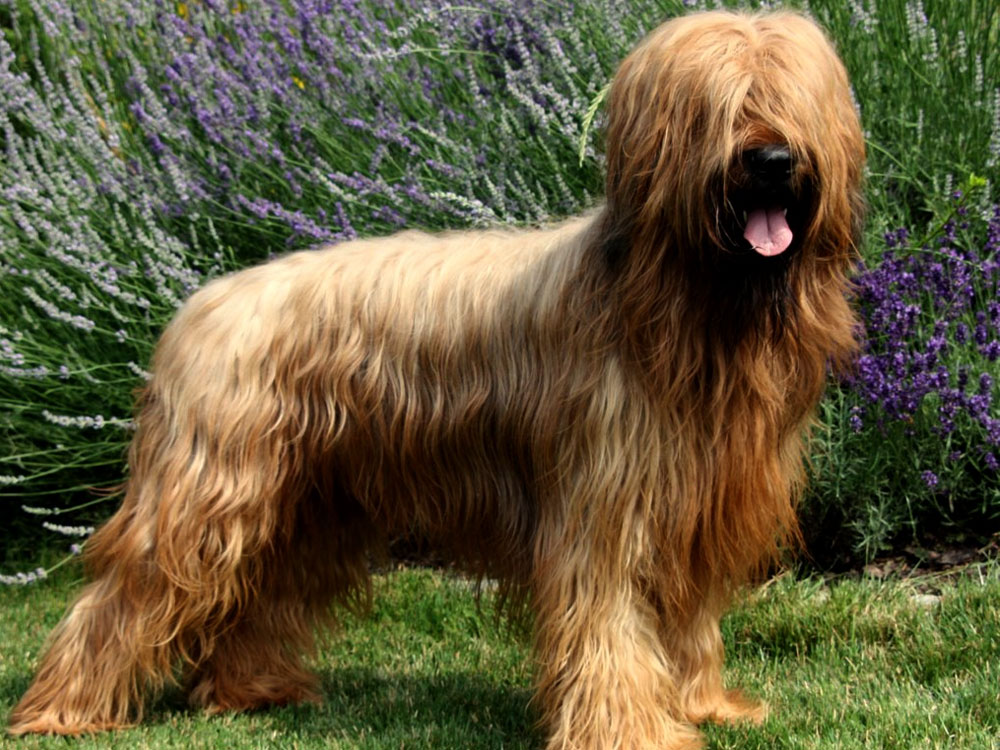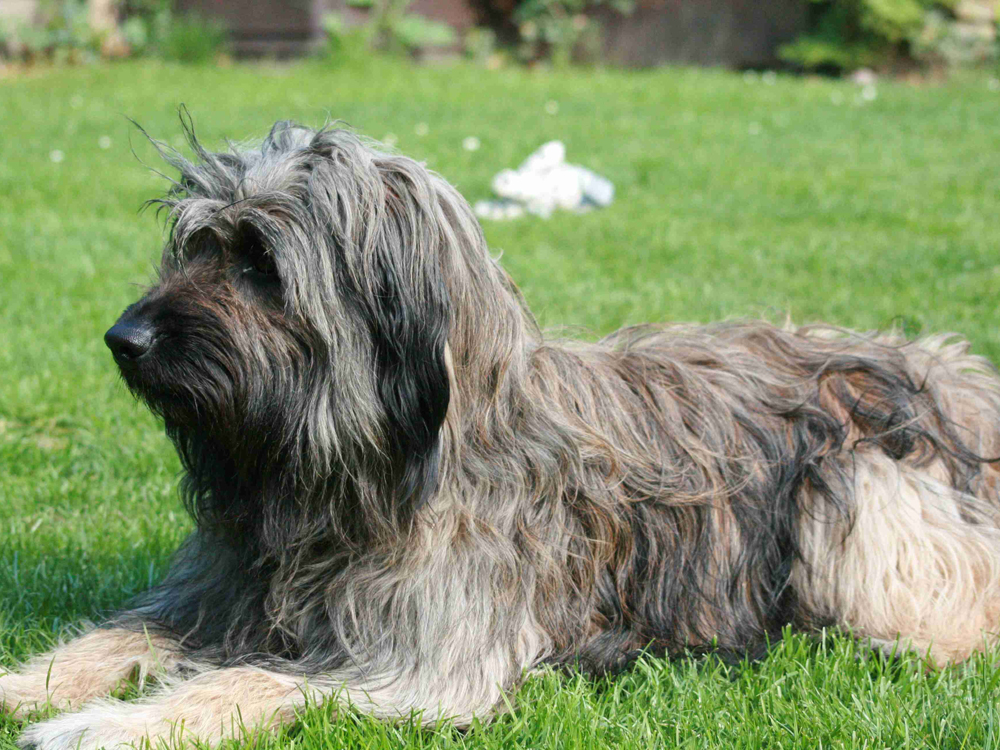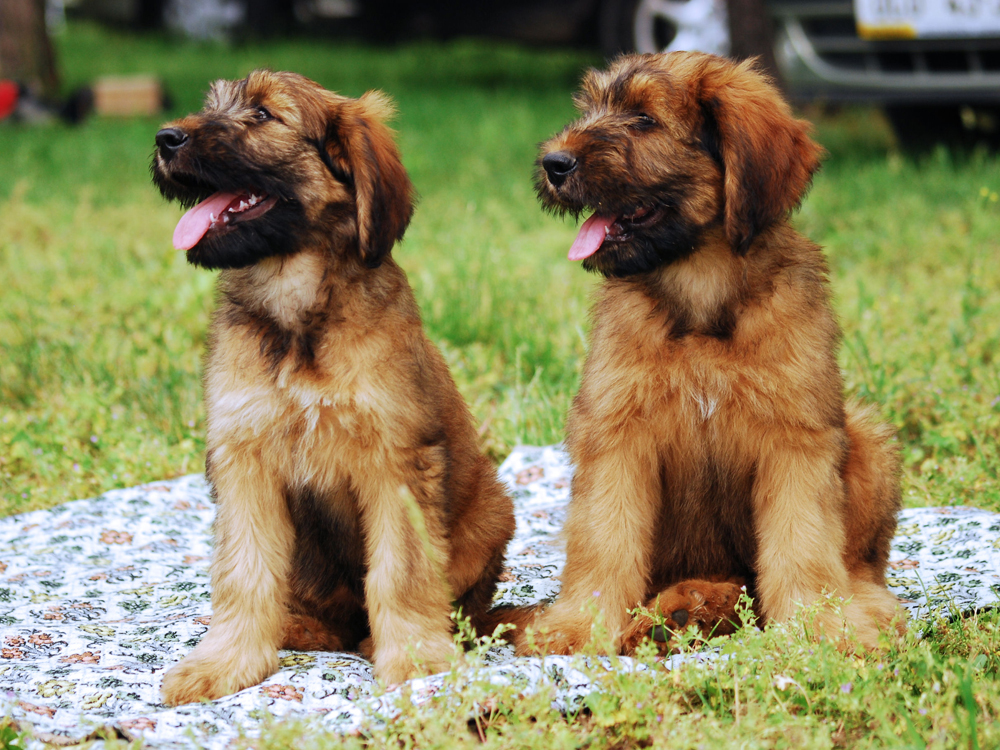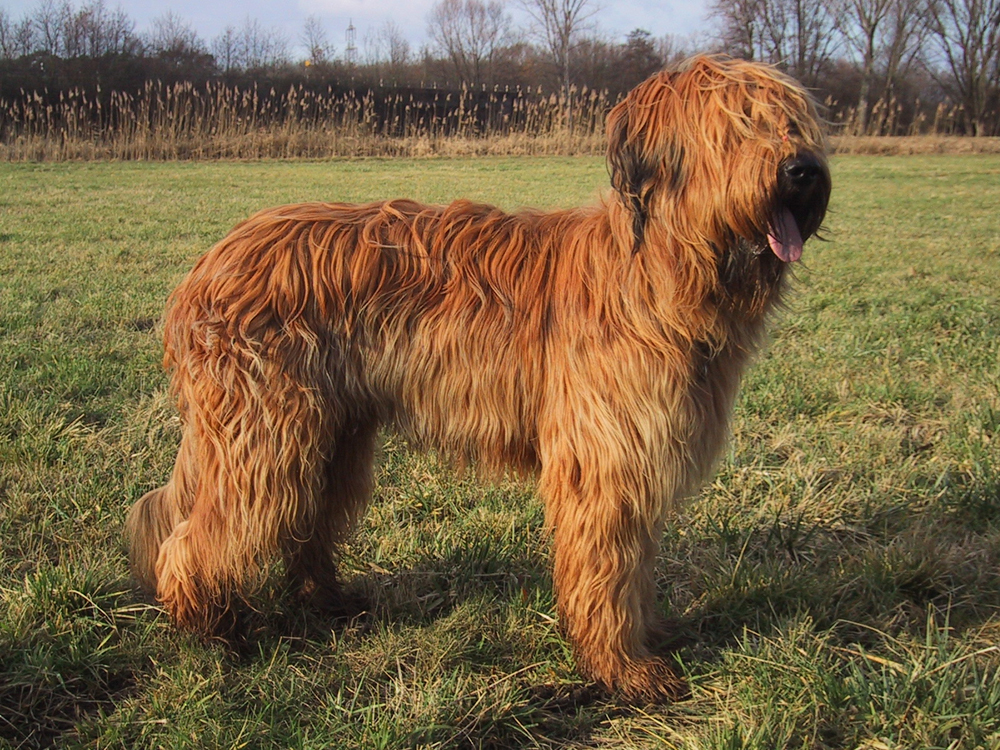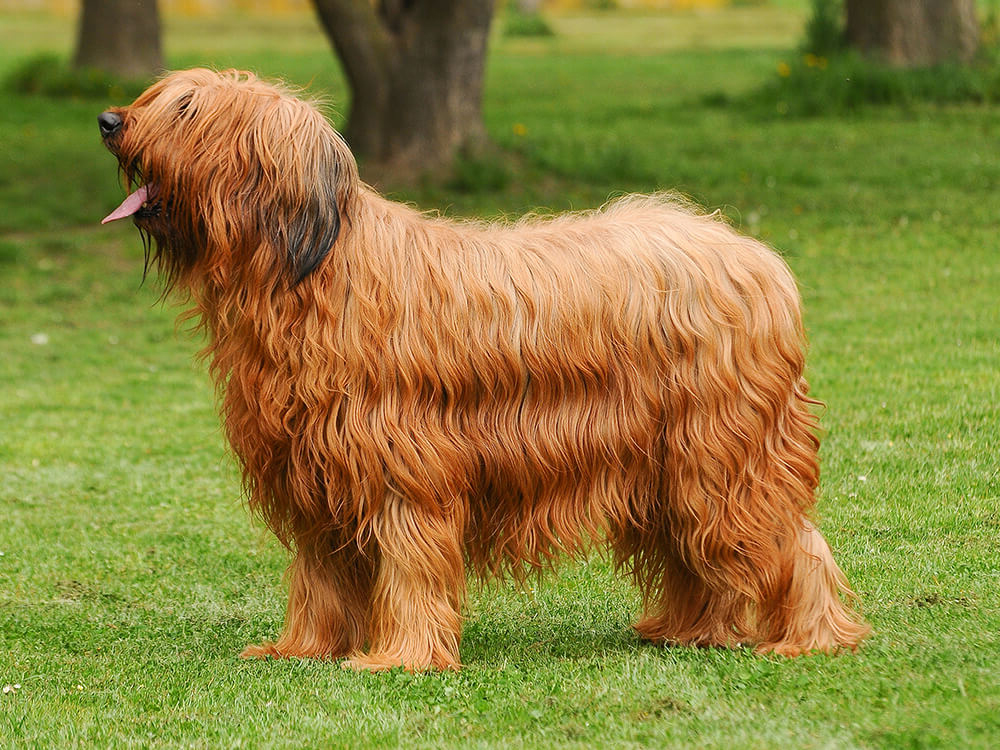
Briard Breed Pictures
Vital Breed Stats
| Height: | 58 - 68 cm M | 58 - 68 cm F |
| Weight: | 36 - 40 kg M | 27 - 31 kg F |
| Breed Group: | Hound Dog Group |
| Life Expectancy: | 7 - 10 years |
| KC Registered: | No |
Breed Characteristics
| Size: |  |
| Grooming: |  |
| Exercise Level: |  |
| Trainability: |  |
| Barking Level: |  |
| Good with Children: |  |
| Good with other pets: |  |
| Affectionate: |  |
| Protective: |  |
| Cost to Keep: |  |
Give a thumbs up if you love the Briard

0
More About the Breed
History
The real origin of the Briard is a bit vague since there are various versions. Some say it originated in France during the 8th century. It is believed that the French developed this breed, successfully crossing dogs that arrived from the Orient with local Pastoral dogs. Originally called the Chien Berger De Brie, it was developed to produce a large, fearless sheepdog that could go after wolves and other wild predators.
The Briard was also used in the military and even became the official dog breed of the French Army. Because of its courage and intelligence, the breed was also linked to famous people such as Emperor Charlemagne, Napoleon and Lafayette. Experts believe that it was Thomas Jefferson who brought the breed to the US. It was recognised by the American Kennel Club in the late 1920s. The breed only arrived in the UK in the late 1960s.
Appearance
With its large size, rugged appearance and significant amount of hair, the Briard is an eye-catcher. It stands 58 to 69 centimetres at the withers and weighs 70 to 90 pounds. It has a slightly rounded head, strong mouth and muzzle, a square jaw with a perfect scissor bite, large brown eyes, and a black nose. Its ears, covered in long hair, are set high. It has a supple, muscular and well-proportioned body.
The Briard’s shaggy coat, which is low- to non-shedding, gives this breed an endearing appearance. It has a slightly wavy outer coat with a coarse texture and according to The Kennel Club standards, it should not be less than 7 centimetres long on the body. On the other hand, its undercoat is soft and fine. The standard colours are solid black, black with scattered white hairs, and fawn.
Grooming
Some may think that grooming this handsome breed is easy because of its rugged appearance but this is not the case. Its double coat needs a lot of work to maintain. Its fluffy coat is a magnet for dirt and its paws can easily get muddy. To maintain a clean and tidy coat, plenty of brushing and combing must be done daily and a bath every six weeks (or more frequently if your dog spends a lot of time outdoors).
Apart from keeping its coat in top shape, also remember to pay attention to its dental health. Brush its teeth at least twice a week and provide it with chew toys to support strong teeth and healthy gums. Lastly, keep its ears clean and dry, nails trimmed, and skin free from bumps and fleas.
Temperament
Intelligence
As a family dog, it does well around children but tends to herd them and be overprotective. Although early socialisation can teach it to get along with other pets, its high prey drive may be difficult to outgrow when it comes to small animals. It needs to be physically and mentally busy daily to be happy.
Briards may have predisposed characteristics but there is no assurance that your puppy will inherit all of them. This information serves as a guide so you know what to expect and somehow help you prepare for them.
Nutrition
- Senior and less active: up to 1,600 calories daily
- Typical adults: up to 1,800 calories daily
- Physically active/working dogs: up to 2,000 calories daily
Feeding
Health
Exercise
Cost of Ownership
The Briard is an expensive dog to own. Firstly, it is a rare breed in the UK so aside from being on a waiting list, you have to pay no less than £600, which can go as high as to £1,000. Because of its long coat, grooming necessities, as well as professional grooming services could set you back £50 or more per month.
You also have to factor in pet insurance, which can range from £40 to £80 per month, and can be costlier depending on your location and the coverage you select. You also have to set aside as much £1,000 a year for routine vet check-ups and preventive care. Above all, the most important cost is food, which costs £60 to £70.
Is a Briard Right for You?
- The Briard is a large pastoral dog with high exercise needs.
- It a fearless protector but is not aggressive without reason.
- To main its shaggy hair, it requires frequent brushing and bathing, and could benefit from appointments at the groomer’s.
- It is not recommended for first-time owners.
- Trainings should be firm and consistent, yet gentle.
